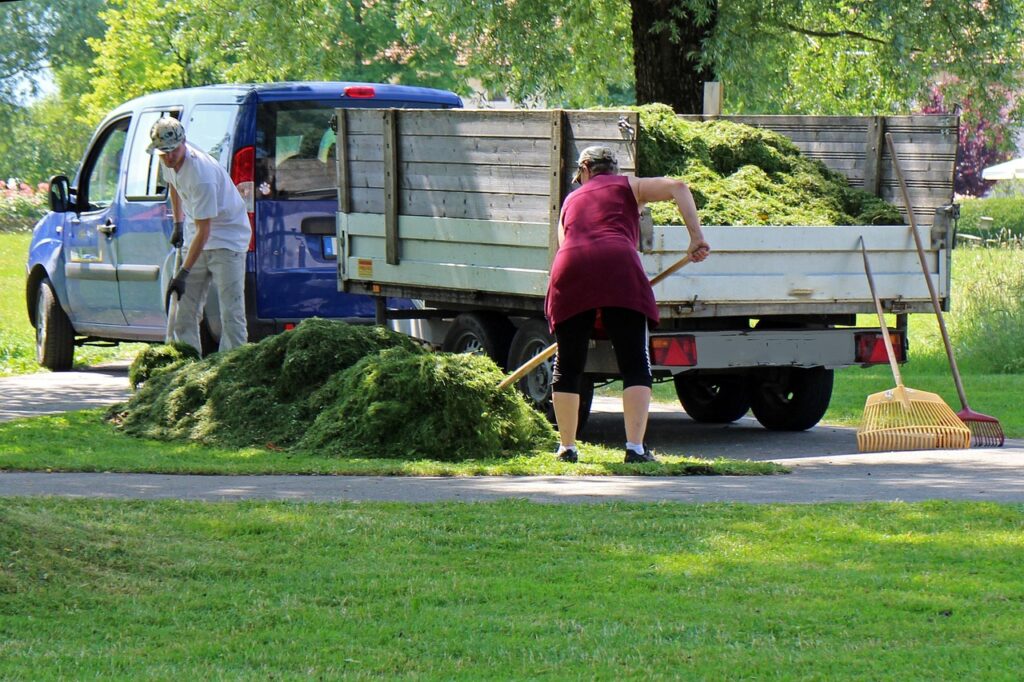Most people think that a metal building looks bland. As mentioned in one of our articles, these structures can actually look aesthetically pleasing.
However, its exterior often appears stark without thoughtful landscaping. Proper landscaping creates a visually appealing space that complements the building’s utilitarian features. A well planned landscape can soften hard lines, highlight architectural details, and bring natural beauty into balance with industrial strength.
Planning with Purpose
A successful landscape design begins with an understanding of the building’s purpose and surrounding environment. A commercial workshop has different landscaping needs compared to a residential storage space or backyard studio. Local climate, soil type, and water availability influence which plants will thrive. These environmental factors should guide decisions to ensure lasting results.
Visual cohesion is also important. Landscaping should not feel like an afterthought. The goal is to design a layout that frames the metal structure naturally. This includes defining paths, creating gathering spaces, and using plant materials strategically to direct the eye.
Creating Zones for Utility and Aesthetics
One of the most practical approaches to landscaping is dividing the exterior space into zones. The entrance should be inviting and reflect the building’s function. Incorporating paving stones, planters, or trellises can transform a plain doorway into a welcoming focal point.
Service areas, such as those near loading docks or utility lines, benefit from subtle screening elements. Shrubs and trees can conceal less attractive components without interfering with access. Green buffers reduce noise and enhance privacy, especially when the structure is close to neighboring properties.
Open green zones offer more than just beauty. They can help with water absorption, reduce dust, and make outdoor work or leisure areas more comfortable.
Choosing the Right Plant Life
Plant selection plays a vital role in any landscaping project. The foundation plantings around a metal building should remain neat and not interfere with drainage or building maintenance. Drought resistant plants are ideal for areas with limited rainfall. These plants require minimal irrigation and still provide texture and seasonal color.
Perennials bring low maintenance beauty year after year. Ornamental grasses offer movement and softness, while flowering varieties provide bursts of color. Trees offer shade and scale. Their placement must take into account roof lines and potential root spread. Spacing trees correctly ensures their growth does not compromise the building’s structure or foundation.
Native plants are often the best option for long term success. They are adapted to the local climate and support local ecosystems. Native landscaping also requires fewer chemicals and less upkeep, making it a sustainable choice.
Incorporating Hardscaping Features
Hardscaping refers to non plant elements like pathways, patios, retaining walls, and seating areas. These features provide structure and accessibility. Around a metal building, hardscaping can help manage rainwater runoff and prevent erosion.
Stone walkways or concrete paths improve navigation and add visual interest. Gravel beds placed along the building’s perimeter can keep soil from splashing on the walls during heavy rains. This helps reduce the need for frequent washing and repainting.
Planter boxes and decorative containers allow gardening even in limited spaces. These mobile elements can change with the seasons and introduce variety without disrupting the overall design.
Outdoor lighting is another aspect of hardscaping. Thoughtfully placed fixtures increase security and extend the usability of the landscape after dark. Solar options reduce energy use while illuminating key areas such as entrances and walkways.
Drainage and Water Management
Water can become a significant issue around metal buildings. Poor drainage leads to standing water, erosion, and eventual foundation problems. A comprehensive landscaping plan addresses water flow by using grading, gravel, rain gardens, or swales.
Gutters and downspouts should be inspected regularly to make sure they direct water away from the foundation. Landscaping can support these efforts through the use of strategically placed rocks and ground covers that absorb water and prevent soil displacement.
Rain gardens use native plants to capture runoff and allow it to soak into the ground naturally. These gardens are not only functional but also beautiful and eco friendly. Creating a slight slope away from the structure ensures water does not pool near the base.
Designing for Year Round Appeal
A landscape should provide visual interest in all seasons. In warmer months, flowering plants and lush greenery dominate. In fall, trees with vibrant foliage add warm tones. During winter, evergreen shrubs and ornamental branches offer texture and structure.
Using a mix of plant types ensures there is always something interesting to look at. Consider leaf color, bloom time, and plant shape when arranging your landscape. Decorative stones, sculptures, and other elements can also fill visual gaps during dormant periods.
A year round approach not only improves appearance but also supports local wildlife and encourages biodiversity. Birds, bees, and butterflies benefit from a consistent food and shelter source.
Low Maintenance Strategies
A beautiful landscape does not need to demand constant attention. Grouping plants with similar water and sunlight needs simplifies care. Mulching reduces weeds and helps soil retain moisture. Automatic irrigation systems with moisture sensors can eliminate the guesswork of watering.
Choosing slow growing plants reduces the need for trimming. Perennials eliminate the need to replant each season. Keeping plantings away from the walls of the metal building minimizes the need for frequent cleaning and prevents mold or mildew growth.
Incorporating gravel or ground cover in high traffic areas reduces lawn maintenance and provides a clean look. Routine inspections help identify problems early and keep the landscape looking fresh.
Using Color and Texture Effectively
Color plays a powerful role in landscape design. Warm tones create an inviting space while cool tones promote calm. Flowers, foliage, and even bark contribute to the overall palette.
Texture adds depth and contrast. Mixing fine leaved plants with coarse ones creates visual interest. Smooth surfaces contrast with rough bark and spiky grasses to catch the eye and break up monotony.
Repetition of shapes and colors helps unify the space. Coordinating the landscape with the color of the metal building strengthens visual cohesion. Accents such as garden art or painted benches can echo building trim or siding tones.
Integrating Functional Outdoor Spaces
Landscaping is not just about plants and appearance. Functional outdoor areas expand the usability of the space around your metal building. A seating area shaded with trees or covered with a pergola becomes a place to relax or entertain.
Workspaces benefit from clean, level surfaces and good lighting. If the building serves as a workshop or studio, outdoor zones can extend working space. Adding outlets or work tables in sheltered corners enhances productivity.
Gardens can provide food or flowers for personal or commercial use. Raised beds make maintenance easier and can be arranged to maximize space. Compost bins, water collection barrels, and tool sheds add function to the landscape while remaining visually pleasing when screened or integrated into the design.
Fencing and Property Boundaries
Fencing defines boundaries and provides privacy and security. The style of fencing should align with the overall design. A metal building paired with rustic wood fencing creates a contrast, while modern steel fencing may complement a more contemporary look.
Plants can also form living boundaries. Hedges or rows of tall grasses can mark edges without installing physical barriers. These green borders soften the view and reduce noise from nearby roads or buildings.
Defining property lines helps organize space and adds clarity to the layout. Clear divisions prevent disputes and make long term planning easier.
Lighting for Safety and Ambiance
Lighting plays a dual role in enhancing beauty and improving safety. Lights along walkways prevent tripping and guide movement at night. Uplighting trees or architectural features draws attention and highlights the landscape’s best elements.
Solar lights are a cost effective and sustainable solution. Wired lighting provides more consistency and control. Motion activated lights near entrances or driveways increase security and deter intruders.
Using different types of light fixtures creates layers of illumination. Ambient lighting offers a general glow while task lighting serves specific needs. Accent lighting highlights points of interest and adds drama.
Final Thoughts on Personalizing Your Landscape
Landscaping around your metal building offers a unique opportunity to blend natural beauty with structural integrity. Each choice you make contributes to a space that feels intentional and welcoming.
Personal touches such as garden sculptures, customized signs, or themed decor reflect your personality and purpose. Maintaining consistency in design and attention to detail ensures the landscape complements the building rather than competes with it.
A well designed and maintained landscape increases property value, supports environmental health, and provides satisfaction for years to come.

